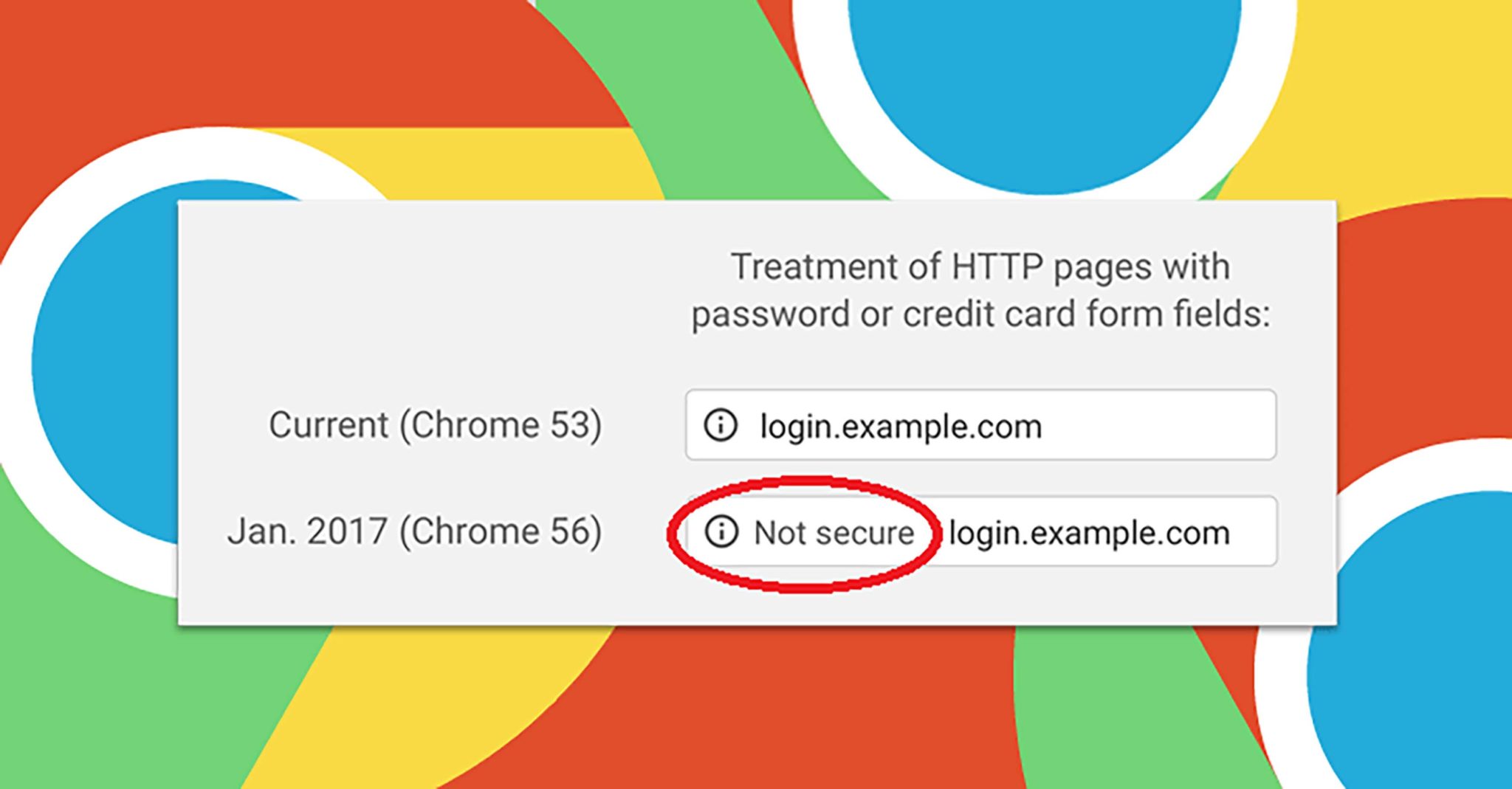Most of us have heard the rumors that websites that stick with HTTP and don’t adopt HTTPS will be marked “not secure” come July 2018. We first hard about this through a blog post published back in February by Chrome Security Product Manager Emily Schechter.
Over the past several years, Google has moved toward a more secure web and user experience and have been strong advocates for sites that adopt HTTPS encryption.
What is HTTPS Encryption
You may be asking yourself, “What is HTTPS encryption?” According to Instant SSL by Camodo, “Hyper Text Transfer Protocol Secure (HTTPS) is the secure version of HTTP, the protocol over which data is sent between your browser and the website that you are connected to. The ‘S’ at the end of HTTPS stands for ‘Secure’. It means all communications between your browser and the website are encrypted. HTTPS is often used to protect highly confidential online transactions like online banking and online shopping order forms.
Web browsers such as Internet Explorer, Firefox and Chrome also display a padlock icon in the address bar to visually indicate that a HTTPS connection is in effect.”
Instant SSL by Comodo also shares, “When you request a HTTPS connection to a webpage, the website will initially send its SSL certificate to your browser. This certificate contains the public key needed to begin the secure session. Based on this initial exchange, your browser and the website then initiate the ‘SSL handshake’. The SSL handshake involves the generation of shared secrets to establish a uniquely secure connection between yourself and the website.
When a trusted SSL Digital Certificate is used during a HTTPS connection, users will see a padlock icon in the browser address bar. When an Extended Validation Certificate is installed on a web site, the address bar will turn green.”
What Does This Mean for You?
What does this mean for your business? Beginning in July 2018, as Google Chrome launches Chrome 68, Chrome will mark all HTTP sites as “not secure.” This means that your website will not be shown on Chrome which now owns 58.4% market share. That means that you could potentially lose 58.4% of your traffic. A good way to find out that exact number is by going to your Google Analytics reporting and figure out how much of your traffic is coming from Chrome. Otherwise you can use the same amount of time in getting your website an SSL certification. If you need help with this, make an inquiry on our contact page and we’d be happy to assist you.


